Anúncio
Collapse
No announcement yet.
Lexus IS (Berlina e Sportcross) 2013/ RC (Coupé e Cabrio) 2014/2015
Collapse
Ads nos topicos Mobile
Collapse
Ads Nos topicos Desktop
Collapse
X
-
-
De facto, a BMW atravessa uma fase onde claramente perdeu identidade.Originalmente Colocado por ttrodrigues Ver PostCarro soberbo!!!
Se fosse comprador iria para este RC F em vez de um M4.
Precisam urgentemente de uma nova imagem...
Enquanto isso, Mercedes, Lexus e Jaguar estalam os dedos!
Comentário
-
[Teste] - Lexus RC-F - Autoweek

What is it?
It’s the ultra-high-performance derivative of Lexus’s new RC 350 coupe (we'll bring you a full review on that car tomorrow). With the LF A’s production run complete and the IS F sedan rolling toward the sunset, the new-for-2015 RC F will be the Lexus performance flagship for years to come.
The RC F’s direct competition is obvious enough: The Audi RS5, the BMW M4 and the Mercedes C63 AMG Coupe (and perhaps soon, a Cadillac ATS V coupe). These cars account for only five percent of sales in the growing market for compact luxury brand coupes, but their impact extends beyond the numbers. Lexus marketing chief Brian Smith calls the RC F a halo car. As the sole bearer of Lexus’s F designation (for Fuji, as in Speedway), it will set the brand’s performance tone, build its enthusiast cred and help drive sales of the profitable F-Sport option on other cars in the line, including the standard RC 350.

The RC F starts in the same place as the RC 350—on a platform and suspension melded for the Lexus GS sedan (front wheel wells forward), the IS sedan (rear wheel wells back) and the IS C convertible (in the middle). The RC is stiffened further with unique under floor braces, and its length, wheelbase and width don’t vary more than a few inches from any if its performance coupe competitors.
The most obvious thing separating RC F from the V6-powered RC 350 is its 5.0-liter V8. The block is the same one used in the current IS F sedan, but everything else in the engine changes. There are new heads with titanium valves, a larger throttle body and lighter connecting rods with a narrower cross section. The net is an increase of 51 horsepower compared to the IS F, for a class-leading 467, with 389 pound-feet of torque and a 7,300 rpm redline. Yet new motor-driven cam phasers can keep the intake valves open longer at light loads, effectively creating an Atkinson cycle in the RC F V8. Projected EPA numbers (16/25) surpass those for the RS5, C63 and dual-clutch, six-cylinder M4.
It doesn’t stop there. The F’s performance upgrades are comprehensive, starting with a Torsen limited-slip rear end. There’s also an optional torque vectoring differential that uses motors to manipulate clutch packs on each rear half-shaft. It can torque up one side or the other to help vector the RC F through a corner. It’s manually adjustable, and trick, but it also adds 70 pounds of mass.

The RC F’s springs are firmer than those on an RC 350 with F-Sport upgrade. The adaptive shocks have a higher default dampening rate. The Brembo brakes are larger still, with six-piston aluminum mono-block calipers in front, four-piston in the rear. Michelin Pilot Sports come standard (235/40-19 front, 265/35-19 rear). There’s more driver-selectable adjustment for the eight-speed torque converter automatic (the only choice), the electrically boosted steering and the stability electronics, including all-off.
The F adds a triangular structural brace in the engine compartment and another behind the rear seat (which in turn eliminates the folding rear seat). It has an aluminum hood and bumper beams, a speed-activated rear wing and an optional carbon-fiber wing and roof panel. At 3,958 pounds, its curb weight slots below the all-wheel-drive RS5 and just above the C63. Its power-to-weight ratio is surpassed only by the much lighter M4.
And it looks the part. The F adds big intake grilles at the edges of the RC’s front valance for oil and transmission coolers. It has a vent in the center of its hood, and gill vents at trailing edge of its front fenders. Its exhaust tips are stacked at a 45-degree angle, and it does without the funny strakes at the corners of the RC 350’s rear bumper. The RC F grabs plenty of looks, in “what’s that?” more than “whoh, beauty!” fashion.
This car comes track ready, and as if to prove the point, Lexus will begin building FIA-spec GT-3 race cars for customers this fall. Yet the company insists it wanted more.
“The goal was a track-ready car for any driver, assessable to all skill levels,” say chief engineer Yukihiko Naguchi. “We wanted a car that can captivate experienced enthusiasts and create new ones from novice drivers”
The RC F hits showrooms with the RC 350 in November, starting at $62,400. That’s a few hundred less than the current base price for the C63 AMG, about $2,000 less than the M4, and over $8,000 less than the RS5. Options are plentiful for the RC F—including the carbon fiber, trick differential, safety systems such as blind-spot warning, an all-weather package and 835-watt Mark Levinson audio—and can add $15,000 to the price. Lexus anticipates some 2,500 sales annually, compared to 15,000 for the RC 350.
The IS F sedan will end its seven-year run with arrival of the RC F, but that should matter only to those who need four doors on their track Lexus. The new halo beams brighter than ever.
How’s it drive?
Like the new big swinger in the Lexus lineup, or a highly competent track car that won’t pummel you on the road. The standard Lexus RC 350 is well sorted, and engaging as many Lexus products go. The RC F takes everything—head-rush acceleration, minimized body roll, dizzying lateral g loads—to an entirely different level.
The first thing you’ll notice is the seats. They’re the best in a model line filled with good seats, and the extra sport bolstering doesn’t make them too difficult to slide into. The shoulder wings provide excellent support and help keep the driver in place, but they don’t limit shoulder or arm movement.

The second thing is rumble and acceleration. The RC F is really fast, and you don’t need a race track to notice. Just floor it on a lightly-traveled stretch of road. It downshifts a couple a gears, presses you back into the seat and rockets--in a style that can stun if you’ve been puttering at 45 mph. You’ll feel the rear wheels skip sideways in the upshift from second to third, even as the traction electronics do their work. The digital readout in the center says 100 when you blink.
The electrically boosted power steering is well tuned, and the default steering effort might be the firmest in the competitive set. We like that. We’d also like a manual transmission option, and it would seem that Lexus, in its quest to build heritage and enthusiast cred on par with its European competitors, would want one too, no matter how many buyers actually choose it.
Regardless, the RC F’s eight-speed might be the best performance-tuned torque converter automatic to date. Manual shifts seem as quick as those in a dual-clutch, but there is no price to pay in jerk and lurch when the RC F is trundling through errands or a commute. The control electronics protect against over-revving on downshifts, if road speed is too high for the selected gear. They’ll hold first gear to redline, but shift up if you hit the limiter. They’ll let the driver bump the limiter all day without shifting up in second and beyond.
The eight-speed might be more impressive in full auto mode, with the electronics in Sport +. A new management program called G-Force Artificial Intelligence uses g readings from the on-board accelerometers in the shift-control strategy. It will downshift readily and sequentially under hard braking, and it won’t upshift before the exit when the RC F is blasting out of a sweeper. In full hammer mode at a place like the Monticello Motor Club in New York, where the 4.1 mile roller coaster has 450 feet of elevation change and 18 turns to learn, the RC F auto will choose gears better than most of us could on our own.

On track, the 2015 Lexus RC F delivers more brake force, more aural satisfaction and more speed than a RC 350 with F-Sport—more of everything, except body roll. With F-Sport, the adaptive suspension continues to adjust damping rates according to the surface variation underneath. With the RC F, in Sport +, you get the most aggressive damping rate available—no adjustment for the surface, no variation. It’s racier, more enthusiastic, without feeling muscle bound or heavy.
Yet the skid management electronics remain generally protective. The RC F’s default is a safe push, if you brake too late and turn in too quickly. You’ll just stay off the gas and slow down. But if go in slower and get on the gas sooner, it will slide in back no problem, or throttle back if the traction control is on.
Ultimately, the RC F does what Lexus wanted it to do. It’s faster than a lot of the people who’ll buy it, but its performance is also accessable, providing room to build skill. It’s as close to idiot-proof as any car with its performance envelope, unless you switch everything off. At a track like Monticello, which is slow learning for 98-percentile pros when the brake points, entries and apexes aren’t marked with cones, the RC F allows us of lesser skill to focus on finding the way around and working toward full speed. It’s as beastly as a Lexus gets, but an enjoyable beast, indeed.
Back on the road, there’s nothing about the RC F that’s excessively painful. The suspension is definitely firm, even in Normal mode, and there’s slap, bump and chatter in the sport tires. Yet all that goes with the turf this car plays on. It’s generally quieter, more civil –maybe more comfortable—than an M4. Short of same-driver lap times, the seat of these pants says the BMW is the only car in the set that makes a clear-cut case for better track car.
Do I want it?
In theory, certainly, though if you’re an old-school manual buyer and a genuine shopper, you can cross it off your list.
The RC F does exactly what Lexus says it should in the functional sense, and it moves the brand closer to its older European competition in the image sense. No excuses necessary.
Comentário
-
[Teste] - Lexus RC-F - Autocar
 Better on road than it is on track, but the RC F still feels like a car that was designed for the last decade, not the next
Better on road than it is on track, but the RC F still feels like a car that was designed for the last decade, not the next
What is it?
The RC F loosely replaces the old IS F, and essentially it's Japan's intriguing and undeniably striking looking alternative to a BMW M3/M4.
Look beyond its arresting new nose and browse what's on offer objectively in the new £59,995 RC F, however, and you will immediately be struck by two thoughts. One, that it appears to represent an awful lot of car for the money. Two, that it is, despite what Lexus might claim, very much an old school kind of sports car.
Thought number one is entirely positive, of course, and arrives courtesy of the fact that the RC F looks a million dollars - both in photos and in the metal - and appears to be bursting at the seams with potential.
Lexus claims the car can hit 60mph in 4.5sec and has a top speed of almost 170mph but that it is also one of the stiffest and most refined sports coupés the world has ever seen.
The gradual realisation of thought number two, however, is rather less welcome today than it might have been 10 years ago.
Back then, a brand new rear wheel-drive coupe that's powered by a 5.0-litre V8 engine with 471bhp would have seemed like a mouth watering proposition.
Nowadays, such He-Man credentials no longer seem quite so relevant, and they certainly don't feel very cutting edge beside what's on offer from the faster, more economical, less polluting competition from Germany.
And perhaps the most baffling statistic of all about the RC F is its kerb weight - because at 1840kg it is a full quarter tonne heavier than the BMW M4/M3 with which it is so obviously intended to compete.
To be blunt, sending the RC F into battle with a compromise such as this to bear - against competition like that - almost seems like harakiri on Lexus' behalf.

What is it like?
Key question here is therefore - can the Lexus RC F belie such apparent technical antiquation by being all warm and cuddly where it counts - on the road? The answer is both yes and no.
In many ways, what you see is what you get. The RC F makes a fabulous noise and goes as hard as you'd imagine it might given that it has 471bhp and 392lb ft but weighs two tonnes with two people on board.
In a straight line it's at least a seven out of 10, with a snappy eight-speed gearbox that features all sorts of different drive modes plus that NASCAR soundtrack doing all it can to enhance the excitement factor whenever possible. But even in a straight line, a BMW M3 it is not. Not by a long chalk.
But that doesn't matter because it goes round corners beautifully and has delicious steering and handling so can be forgiven for weighing a bit too much because the driver involvement it provides makes an M3 seem boring by comparison, correct? Not quite.
On the track we drove on in the USA, which had been chosen specifically by Lexus to demonstrate the car's abilities, the RC F felt surprisingly clumsy near the limit, with shuddering brakes and nowhere near enough precision to its handling.
It was, to be honest, a bit of a disappointment at eight tenths and beyond, with neither the composure nor the thrill factor you'd hope for, despite featuring a new Torsen differential.
As a road car, though, the RC F makes much more sense. Its ride is supple in all but the most aggressive drive mode, of which there are four in total to choose from.
Its electric power steering is also accurate and precise without ever delivering much in the way of genuine interaction between your palms and the road below. And the noise and thrust from its V8 engine is pretty magical on occasions, while even the handling seems more incisive at lower, less strenuous road speeds.
As a pure road car, in fact, the RC F is a highly desirable, rapid, and really rather lovely thing to drive - with a mostly brilliant new interior and a level of quality inside that few if any cars at this level can match.
If Lexus made a little bit less of a noise about the RC F being a great track car, it would be far easier to accept it for the soothing and refined sports GT car that it unquestionably is. But as a track weapon alone it lacks teeth, and in this class that's either a major drawback or a mild disappointment, depending on what you expect from such a machine.

Should I buy one?
Overall the RC F struggles to compete with the M3 on too many levels to be classed as a genuine contender. Like the IS F it loosely replaces, it's an intriguing outsider, nothing more, even if it is powered by one of the most naughty sounding V8s money can buy.
And for the 170 people who Lexus hopes will buy one in the UK next year, none of this will matter much because, if nothing else, the RC F looks so compellingly different from the herd. This alone will make it appeal to a certain kind of customer; to someone who wouldn't be seen dead in an Audi or an M3. And that's absolutely fine by us.
Lexus RC F
Price £59,995; 0-62mph 4.5sec; Top speed 168mph; Economy26.2mpg; CO2 252g/km; Kerb weight 1840kg; Engine V8, 4969cc, petrol; Power 471bhp at 7100rpm; Torque 392lb ft at 4800-5600;Gearbox 8-speed automatic with paddle shifters
Comentário
-
[Teste] - Lexus RC-F - CAR Magazine UK
The RC F is the first performance car from Lexus since the incredible LFA supercar, and bucks the current turbo trend with a traditional naturally aspirated V8. But has it got the goods to outmuscle BMW’s M4?
Where did this Lexus RC F suddenly spring from?
It’s based on the RC coupe which US dealers get very soon, but which we won’t get in the UK until next year when a turbo four will replace the Yank-spec V6. But you might recognise the styling from a couple of previous Lexus concept cars, the LF-CC and LF-LC.
What’s under the skin?
The front end is from a GS, the back end from the old IS-F saloon, and the bit in between, is borrowed fromthe IS-C cabrio. Seventy percent of the suspension components are new, however, and Lexus says the structure is massively stiff, which it bloody well ought to be, given that it weighs 200kg more than a BMW M4 coupe.
To deal with that heft, it gets a reworked version of the IS-F’s 5.0 V8, which receives a 48bhp boost and now sends 465bhp to the rear-wheels through an eight-speed automatic gearbox. At the back there’s a Torsen limited slip diff as standard, with the option of a torque-vectoring unit.
First impressions?
A smile when you see that the exhaust tailpipes are genuine this time, instead of the nasty fake plastic things stuck onto the bumper of the IS-F. And an even bigger smile when the V8 wakes up with a growl and serves a perfect reminder of what’s wrong with the M4’s new engine. Then you squeeze the right pedal and realise what BMW got right. The truth is the RC F never feels that quick, not quick enough for the company it keeps, anyway. Lexus quotes 4.5sec to 62mph, but that’s 0.3sec down on an M4, and you really have to work it hard to get your kicks. It simply doesn’t produce enough torque for a car that’s too heavy. It’s around 6mpg thirstier than the BMW, too.
There are good points. On track, it feels absolutely faithful, the steering has a reassuring linearity to it and the brakes are strong. But it never feels as nimble or controlled as the BMW, even with the smart diff working its magic, and lacks the wallop you get in the M4 when you plant the throttle on the exit of a corner.
On the road it fares much better. The ride is mostly good, and while the paucity of low and mid-range power is even more apparent, the engine is actually a bit of a charmer. The interior, lifted straight from the IS saloon, is a lovely thing too. You twist the audio volume dial and everything from the texture and shape of the knob to the precision and gearing of the gubbins behind it exemplifies Lexus’s attention to detail. Less happily, the LFA’s unloved computer mouse controller has been swapped for a rubbish laptop-style trackpad to operate the multimedia system. It needs binned for a rotary dial. And while there are four seats, the rear is more cramped than an M4’s.
Anything else I need to know?
Well, you’d be advised to steer clear of the hideous RC F Carbon, which adds a massive £8000 to the £59,995 base price in exchange for a Mark Levinson hi-fi, heated Alcantara seats, tastier same-sized alloys and that trick diff, but also a carbon roof and bonnet. The roof, we could live with, and the two are said to save 15kg, but the bonnet is seriously OTT. Fortunately you should be able to cherry pick some of those options for the base car, which is predictably loaded with goodies anyway.
Verdict
We ran an IS-F, a car that never troubled the old M3 much in group tests, as a long termer, and really came to admire it. Lexus cars have that effect on you. They’re about more than what you’ll discover on a brief test drive. But if you asked us where to put your coupe money today, we’d have to go for the BMW, or hang on for the new twin-turbo AMG C63 that’s due to pop up any time soon. As it stands the Lexus is heavier, thirstier, pricier, and not as much fun as the competition. It’s a three and half star car, but we don’t do half stars. The ray of sunlight that might turn those three stars into four is that Lexus’s engineers say there’s much more to come from the RC F. We’re ready when you are, boys.
Statistics
£59,995 Now 4969cc 32v V8, 465bhp @ 7100rpm, 391lb ft @ 4800-5600rpm Eight-speed automatic, rear-wheel drive 4.5sec 0-62mph, 168mph, 26.2mpg, 252g/km CO2 1765kg/steel 4705/1845/1390
CAR's rating
Handling
Performance
Usability
Feelgood factor
Readers' rating
Comentário
-
[Teste] - Lexus RC-F - EVO
Rating:
Can Lexus’ rival to the BMW M4 capture some of the brilliance of their LFA supercar and upset the established German rivals?
What is it?
This is Lexus’ M4 – a pumped-up coupe with a thumping 471bhp and a distinctive and seriously aggressive look. It follows on from the excellent IS-F and is inspired by the simply breathtaking LFA… so it might just be a car to take the fight to the new BMW M4. The RC F costs from £59,995, over £3000 more than the BMW, but comes loaded with kit. The RC F Carbon saves 10kg, gets shiny black weave for the bonnet, roof and active rear spoiler plus more alcantara for the interior and a trick torque vectoring rear differential for £67,995. If you don’t fancy the bare carbon bonnet (it does look a bit Fast and Furious) but like the sound of the diff then it’s available as an option on the standard car, too.
Technical highlights?
Unlike BMW the people of Lexus have kept the faith with atmospheric engines. No turbos here, just 4969cc of pure V8 goodness. This approach nets a mighty 471bhp at 7100rpm and 391lb ft from 4800-5600rpm. Lexus claim 0-62mph in 4.5 seconds and a top speed of 168mph. As with the IS-F, the V8 drives through an 8-speed automatic box and a torsen limited-slip differential or that torque-vectoring unit that works by actively pushing power to the wheel with the most grip, not simply braking an inside wheel as most other systems do.
There’s so much more: Four mode VDIM (vehicle Dynamics Integrated Management, which manipulates ABS, VSC and TRC) including an ‘Expert’ mode that only steps in to prevent a spin. You can also opt to switch it off altogether. The torque vectoring diff has a further three modes: Standard, Slalom and Track and the drivetrain can be tailored with Normal, Sport S, Sport S+ and Manual modes… Then there’s the new 6-piston 380mm front brakes, the V8’s ability to switch to the Atkinson cycle for efficiency. The list goes on. And on.
What’s it like to drive?
We tried the car on the fantastic Monticello Motor Club circuit near New York and the roads nearby. The former is a seriously tough environment to launch any new car but with ‘F’ signifying the Fuji Speedway and lots of talk of ‘race ready’ performance the RC F should shine here.
Sadly it doesn’t and its weight is the reason why. The RC F is a chunky 1765kg and it feels every one of those on the circuit. The brakes cope pretty well but are groaning within a handful of really hard laps, the car is slightly clumsy on turn-in and understeer sets in quickly and that engine – which sounds fantastic and promises so much – feels overly burdened. It never feels the full 471bhp and simply doesn’t deliver the instant, bruising torque you’d hope to find. Nor does it sparkle at the top end… It’s all a little underwhelming.
On the road things are much better. The steering is really nicely weighted and fluid and seems well tuned to the car’s reactions as it tackles a series of corners. Grip and traction feel strong, the ride is pretty supple and the gearbox might not be dual-clutch precise but does a pretty effective job. But still it doesn’t really feel fast or alive to your inputs. It’s fun but somehow not very exciting.
Fortunately it’s a lovely place to be with a really cool interior despite a few scratchy plastics in places. The seats are great but set slightly too high and overall it feels pretty special, helped when the V8 gives it the full bellow above 3800rpm. But special enough to overcome its dynamic shortcomings? I don’t think so. On a bumpy, wet road in the UK I suspect it’ll be more fun but I can’t believe it will transform from slightly reluctant to breathlessly exciting… And that’s a disappointment.
How does it compare?
Let’s discount the pretty horrid RS5, which leaves the BMW M4 and the forthcoming C63 AMG with the new 4-litre twin-turbocharged V8. On paper the RC F is right on the money, but it’s simply outclassed by the M4 and we suspect that the next C63 will feel much, much faster with its new torque-rich engine. We had high hopes for the RC F but unless it’s transformed by a bit of UK-spec Super Unleaded and gets some serious chassis tweaks to help disguise its weight then it can only be judged a missed opportunity.
Anything else I need to know?
The optional TVD torque vectoring diff is seriously clever, utilising two electric motors to control the pressure on a corresponding multi-plate clutch. The motors can be adjusted every one-thousandth of a second to ensure the optimum flow of power to each wheel.
evo RATING

Fantastic naturally aspirated V8 engine 
Feels heavy; not that exciting on track
Comentário
-
Porque é que o RC-F pesa tanto?
At 1840kg, the new Lexus RC F is a full quarter of a tonne heavier than a BMW M3, which detracts from its track-car focus
I'm sitting at a table, talking to the chief engineer for the new Lexus RC F – a gently spoken Japanese gentleman called Yukihiko Yaguchi – having just manhandled his new car around a private race track outside of New York.
And, to be honest, I've not had that great a time in the car.
In fact, I've been curiously disappointed by how cumbersome it had felt when trying to stop and change direction for, and remain composed in the middle of, this circuit's numerous corners.
And the problem is the car's weight. It simply feels too heavy to be genuinely agile – as most cars that nudge two tonnes when they have just a driver and fuel on board tend to on a circuit.
So I ask Yaguchi-san a simple question, hoping he'll respond with an equally simple answer. Why, I ask, does the new RC F weigh as much as it does?
Because its chassis and body-shell are as stiff as it gets, replies Yaguchi-san via an interpreter. Also, he points out, there are more active safety features on the car than in just about any other rival. And in a nutshell, that's why the RC F weighs what it does.
So presumably your car's body-shell is quantifiably stiffer than the latest M3's, I ask, which weighs a full quarter-tonne less than the RC F?
Not sure, replies Yaguchi, because we don't know how stiff the BMW is, but we know our car is very stiff indeed.
Which leaves me feeling a bit baffled if I'm honest. How can Lexus claim that the RC F is stiffer than the competition if it doesn't know how stiff an M3 is?
And does the RC F really need to be so festooned with (and therefore burdened by) safety features if, as Lexus claims, it's meant to be one of the most exciting cars to drive on a track in its class?
Don't get me wrong, the RC F is a terrific road car, one that's as rapid as it is refined; a machine whose on-road personality is pretty much defined by its delicious atmospheric V8 engine. Which makes it refreshingly old-school in this day and age, and therefore right up my avenue.
But when Lexus tries to convince us that it has built a car that's as sharp to drive on a track as it is on the road – and is therefore a competitor to the M3 in any dynamic scenario – that's when the rhetoric becomes harder to believe. Because track cars, really good track cars, should never weigh the thick end of two tonnes.
And, no, I'm still not entirely sure why it weighs as much as it does, either, although believe me I did try to find out.
Maybe the metal they use in Japan is simply thicker than the stuff they use in Munich nowadays. Or (whisper this) maybe Lexus has dropped the eight ball in this particular instance in its unceasing quest for safety and refinement.
Either way, the RC F weighs a good 200kg more than it should, which means it's been given the worst possible start in life as a driver's car. Given how good the rest of it is, that's a real shame if you ask me.
Comentário
-
[Teste] - Lexus RC-F - Autoblog

I didn't get a chance to drive the Lexus IS F until 2009, two years after the car had gone on sale, but I still vividly remember the day it happened. Having piloted almost every other vehicle in the Lexuslineup at that point, I was stoked to finally get some wheel time in the V8-powered, flared-fender muscle sedan, but fully expected the car to offer a quick, sanitized and ultimately un-driverly experience. Lexus built well-screwed-together, comfortable, quiet, reliable luxury cars for the timid, right?
As it turned out, I was 100-percent incorrect. When the premium brand's lauded "skunkworks team" crammed that massive V8 into the innocent IS, and then tuned the thing for competent hot laps at Fuji Speedway (F = Fuji, if you haven't heard), they seemingly forgot every brand value that Lexus had curated over the previous 20 years. It was raw and loud, had fast-twitch reflexes and a penchant for power slides, and it went unyieldingly across the road surface like a racecar cut loose from the paddock.
As far as Ur- models and origin stories go, the IS F and Lexus F has a pretty compelling, if new, set. A backdrop against which the sequel, this 2015 RC F, must inevitably be viewed. Sure, the otherworldly LFAmay have intervened as the second F model, but the RC carries forward an evolution of the 5.0-liter V8 thumper, some shared body and chassis constructions, similar in-your-face design and a ticket price that's squarely in the mix for premium buyers with a hankering to smoke tires.
My question, to be answered on the roads around New York's Hudson River Valley and on the slithering Monticello Motor Club road course: Does this latest evolution of the Lexus F car still carry the Badass Gene?

From the outside looking in, at least, the RC F can hardly be charged with lacking attitude. It's hard to find an angle on this big coupe that looks conventional or derivative of anything else on the market; complex, rounded surfaces abutted frequently with hard cut lines or jagged detail shapes. I found the rear-three-quarter view to be of particular interest, where light clusters stand proud of the bodywork and are fringed by a Z-shaped edge unlike anything I've ever seen.
As with every Lexus design of the past half-decade, though – with a special place reserved for the current IS – most of the criticism and critique of the RC shape will rest on its prominent prow. The boldest iteration yet of the Lexus spindle grille gapes at the front of the RC F, a chrome frame outlining the tremendous height and width of the maw. With its black, diamond-grate finish, and flanked by two huge vents, virtually the whole nose appears to be forever poised to gulp down fresh air.
Topped off with a hood that's basically one huge, vented power bulge, there's no question that the RC F looks pretty front-heavy. I would argue that this is most aggressive and confident penmanship of the Lexus Spindle Era to date, though I'd be shocked if the form didn't net out as one of the more polarizing in recent memory, too. Risk taking results in lovers and haters, after all.
Before judging the visual weight of the RC F front end though, remember that designers were looking to emphasize the humdinger of a V8 engine that lives under its arches. There is unquestionably IS F heritage in the 5.0-liter mill that powers the coupe, though engineers have really wrought a new motor on the basic block of the outgoing one.

The V8 block now wears new cylinder heads and lighter internal components like a revised crank, forged connecting rods and titanium valves. Combined with a higher compression ratio (12.3:1 against the outgoing engine's 11.8:1), and a loftier redline (7,100 rpm vs. 6,800) the V8 produces 467 horsepower and 389 pound-feet of torque.
The increase of 51 hp from the IS F's 416 is the headliner here, but don't dismiss the 18-lb-ft jump in torque, either. In addition to the higher output, the RC F develops max twist at 4,800 to 5,600 rpm, where the older engine needed 5,200 for full effect. In concert with a bigger throttle body and that faster-spinning engine, the lower torque peak means that the RC F pulled harder out of slow corners in my time at the track, and felt more than a beat quicker to shove me back in my seat than the IS F ever did.
No one should be shocked to hear me say it, but I really dig this 5.0-liter burner. During my first stint behind the wheel of the F – having recently driven a spate of high-output, turbocharged engines, mind you – I was a little nonplussed by the lack of instant torque response when compared with modern forced-induction powerplants. Yet as the day wore on, the sweetness of the naturally aspirated engine became clearer, and the rising, linear power curve, well matched with the close-ratio eight-speed transmission and the booming exhaust, wooed me.
That automatic transmission is a carryover from the IS F, with the same plusses and minuses as far as I'm concerned. A manual mode combines with three automatic programs – Normal (with its own Eco sub-mode), Sport and Sport+ – to accommodate a pretty wide variety of driving styles. Normal and Sport are both suitable for driving on public roads, with the occasional downshift via the steering wheel-mounted paddle for a quick passing maneuver or just to hear the exhaust open up and shred the atmosphere.

It might not be a common site to see Lexus-badged cars on tracks outside of Japan, but I'm happy to say that the 8AT acquitted itself quite well around the nearly four miles and eighteen corners of Monticello. The Sport+ programming aggressively held gears or kicked down through them as needed based on my throttle inputs and speed in a lot of those corners, though it wasn't quite in sync with what I chose on my own when lapping in manual mode. Shifting for myself, I really appreciated that the RC F's instrument display boldly called out approach to the redline, as well as the tactical beep it offered a split second before that line was reached. That kind of audible reminder is a little annoying for street driving, but it's invaluable when learning a new track with a new car, and trying to optimize your lap.
Of course, in the heat of trying to shave time from one's personal record, shift paddles, if they're really meant to be used, should be easy to locate and get purchase on. The smallish Lexus shifters aren't ideal in this cause; more than once I found them a bit slippery when reaching for a quick downshift into a corner.
Better design in terms of sporting application can be found in the two front chairs of the RC F, which are unique to this F model, extremely soft and gripping, and in my eyes pretty spectacular to behold. Deeply sculpted bolsters are present to keep ones legs, hips, torso and even shoulders firmly ensconced. There's a tremendous range of adjustment available, too, including provision for my near six-and-a-half feet to sit comfortably close to the wheel while wearing a helmet.

There are rear seats, of course – two of them – but I didn't find a situation desperate enough to put them to use. With some six inches of legroom less than competitors like the BMW M4 andMercedes-Benz C63 offer (27.3 inches total for the Lexus), these are some cramped confines, make no mistake.
As for the styling and substance of the rest of the interior, I'm still on board with what is essentially carryover interior design from the 2014 IS, with added swaths of leather and padding thrown in for luxuriant measure. I found the RC interior, like the IS, to be modern and sleek with matte and brushed finishes, a unique horizontally oriented dash, and controls that were easy to parse. Two small caveats here: the infotainment display is smaller than the screen that houses it, which is both odd and infuriating. Second is that, though the new touchpad interface is an improvement from the Lexus mouse controller, it still suffers from lag and latency issues that would doom even a bottom-feeder smartphone.
Thankfully, I had a lot more fun controlling the RC F with its steering wheel than I did its infotainment system. This is a responsive, nimble, sharp-handling coupe that really does compliment its driver when pushed. A lot of this is down to a sophisticated adaptive suspension and some new trickery with an electric-motor-enhanced, torque-vectoring rear differential.

The RC F suspension consists of a double-wishbone front and multi-link rear setup, with quite a lot done to stiffen and lighten components relative to the standard RC. Springs, dampers, bushings, steering knuckle, control arms and more are either new or redesigned for the more powerful, better handling F car.
The torque vectoring differential (TVD) will be optional as part of the RC F performance package, and was clearly the piece of tech that the Lexus folks were most excited to show off. TVD makes use of two small electric motors, two multi-plate clutches and a set of planetary gears for each driveshaft. The diff can make adjustments every thousandth of a second, distributing engine torque intelligently to each rear wheel – even if the driver is off the accelerator – creating a rather seamless delivery of power to the outside wheel when cornering. If that's not fancy enough, TVD has three modes to choose from – Normal, Slalom and Track – with Slalom optimized for quick steering response and Track for "high-speed circuit driving."
How does all of it work? On the track, I first switched the RC F into Sport+ mode (which, in addition to changing the transmission and throttle mapping, loosens up traction control, stability control and ABS intervention), and then experimented by lapping in various TVD modes. After I had half-a-dozen laps under my belt and was lapping with reasonable consistency, it became very clear that the trick differential was offering tangible benefits in longer, high-speed corners, and in allowing me to push quickly and smoothly out of tight bends. The application of power never felt like 'intervention' on that part of the car, so much as it complimented me as a driver. By way of increments, I was smoother through and around each part of the track, and probably a bit quicker from point to point.

Even beyond the effects of the new diff, the RC F is a very effective tool for moving quickly. Steering offers some light levels of communication, but with excellent stability and more rapid response than you might anticipate from a two-ton coupe. The car transitioned from corner to corner with a lot of grace and grip, allowing me to really deploy all that power in a confident manner.
Lexus made a big deal of the fact that performance from the RC F is truly accessible, and I think the automaker really nailed that. Unlike the rather barbaric IS F, the new coupe really will allow a driver to learn how to go fast, without much fear of being bitten by a sudden, overwhelming shot of power and loss of grip from the rear tires.
With that said, those looking for a two-door successor to the gnarly IS F experience should probably look elsewhere. In addition to being far more compliant and mellow over bad roads and broken surfaces, the RC F simply doesn't want to play as aggressively as did its older sibling. Even when I turned all of the electronic controls off, the coupe remained pretty neutral and planted in corners, unless I deliberately worked to make the rear end step out. Where the IS F was not only happy to drift through hard corners, but prone to it, the RC offers a much more balanced setup. To me, that's a huge win for the development team, even if it results in a car that's slightly more mainstream, less idiosyncratic. Less of a glorious bastard and more of a grownup – I trust that a lot of you will understand why that makes me both happy and sad.

One unequivocal positive for the RC F is the way Lexus has priced it relative to its main competition from BMW, Mercedes-Benz andAudi (the Cadillac CTS-V Coupe deserves a mention here, too, even though it's on its way out the door). With a starting price of $62,400, the RC F undercuts the C63 AMG Coupe by $1,200, the M4 by $1,800 and the RS5 by a huge $8,500. Now, just exactly how that group would fare in a head-to-head performance comparison is open for interpretation – all are exceptional vehicles, to be sure – but I can say that the RC F belongs in the conversation, especially with that compelling sticker.
When you look back at the history of other performance divisions from premium brands, it's very often the case that the earliest cars are the ones we remember most fondly. That's both human nature, to love that which is in our past, and because the genesis of new sporting vehicles is always exciting for enthusiasts. As the archetype and progenitor of the F program, I will always have a flame burning for the slightly ludicrous IS F that launched it.
But, with cars like this RC F lighting the way for future fast Lexus products, I'm encouraged to believe that company has a profitable, sustainable road ahead. That means more great drives for all of us, and, critically, the promise of continued excitement from a traditionally staid company. Edgy, fun, fast... Lexus. I'll just let that sink in for a moment.
Comentário
AD fim dos posts Desktop
Collapse
Ad Fim dos Posts Mobile
Collapse
SECÇÕES
Collapse


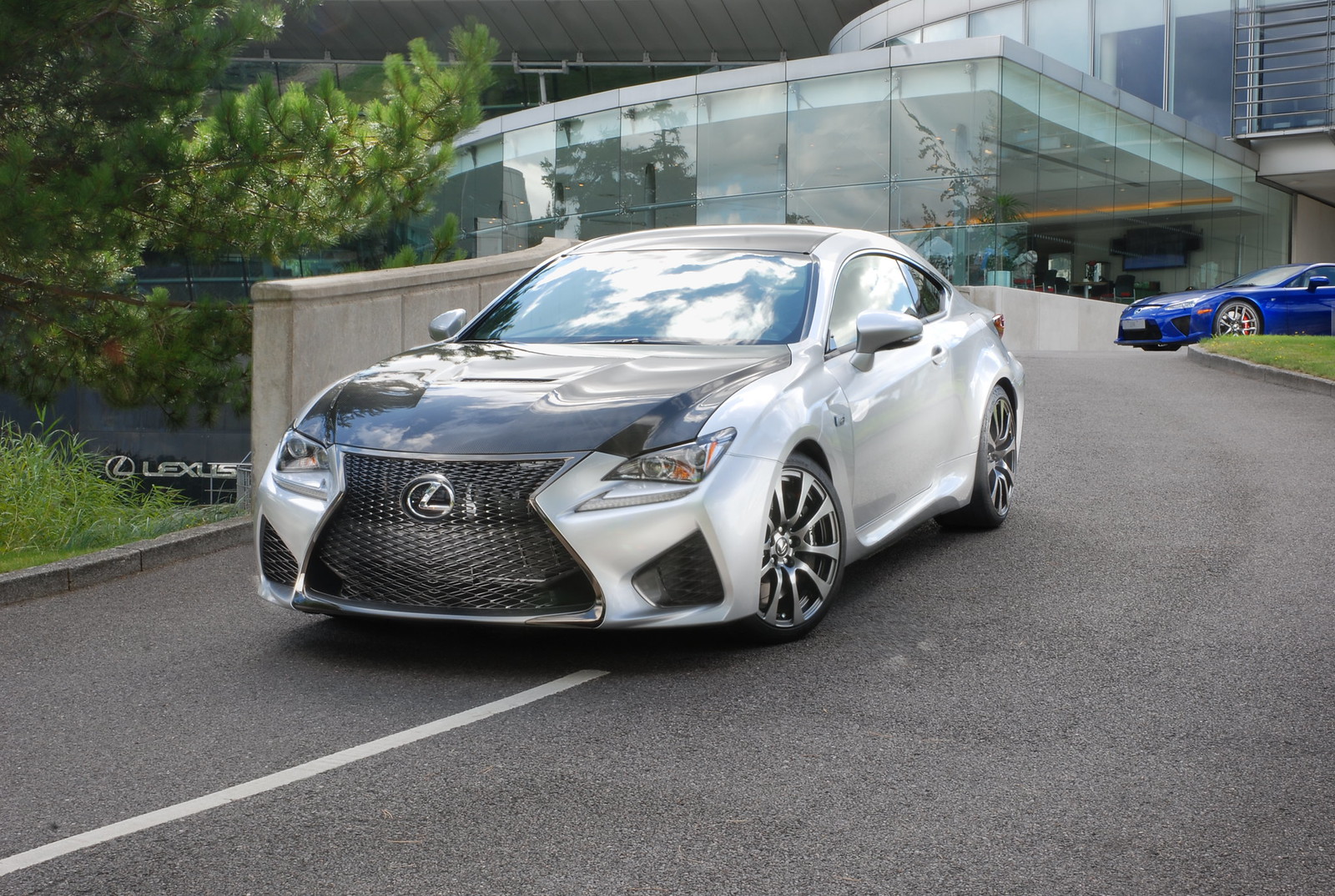
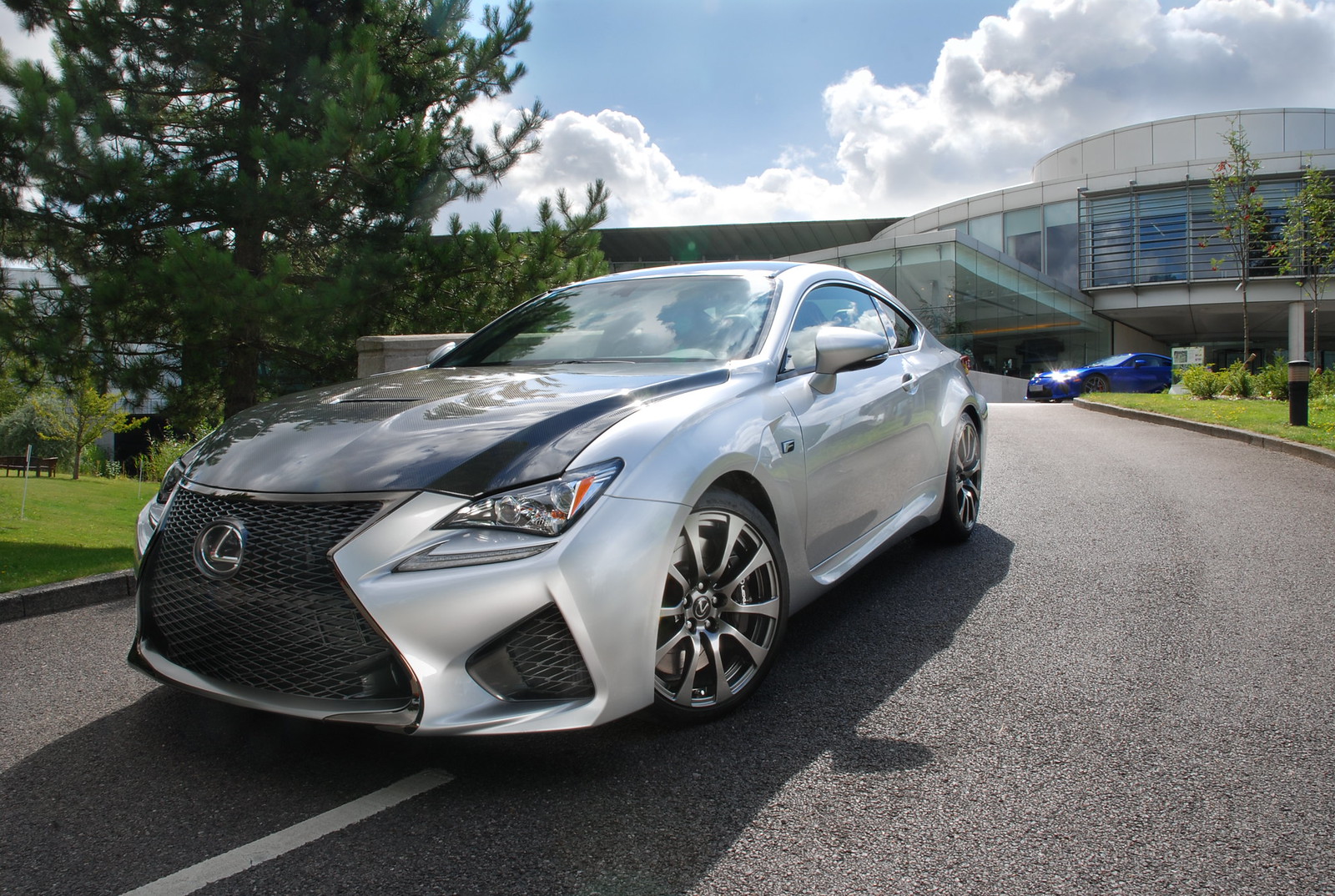
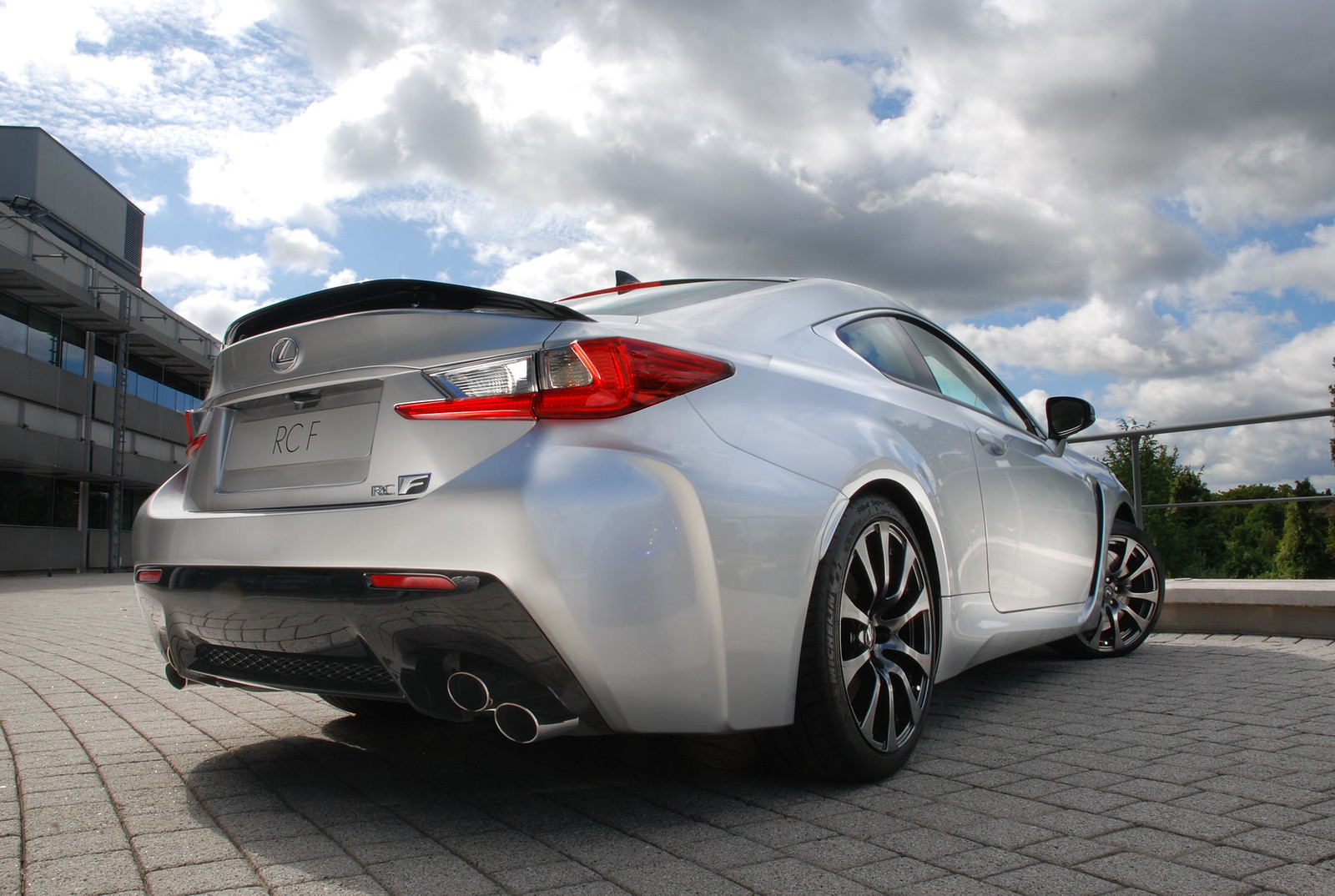



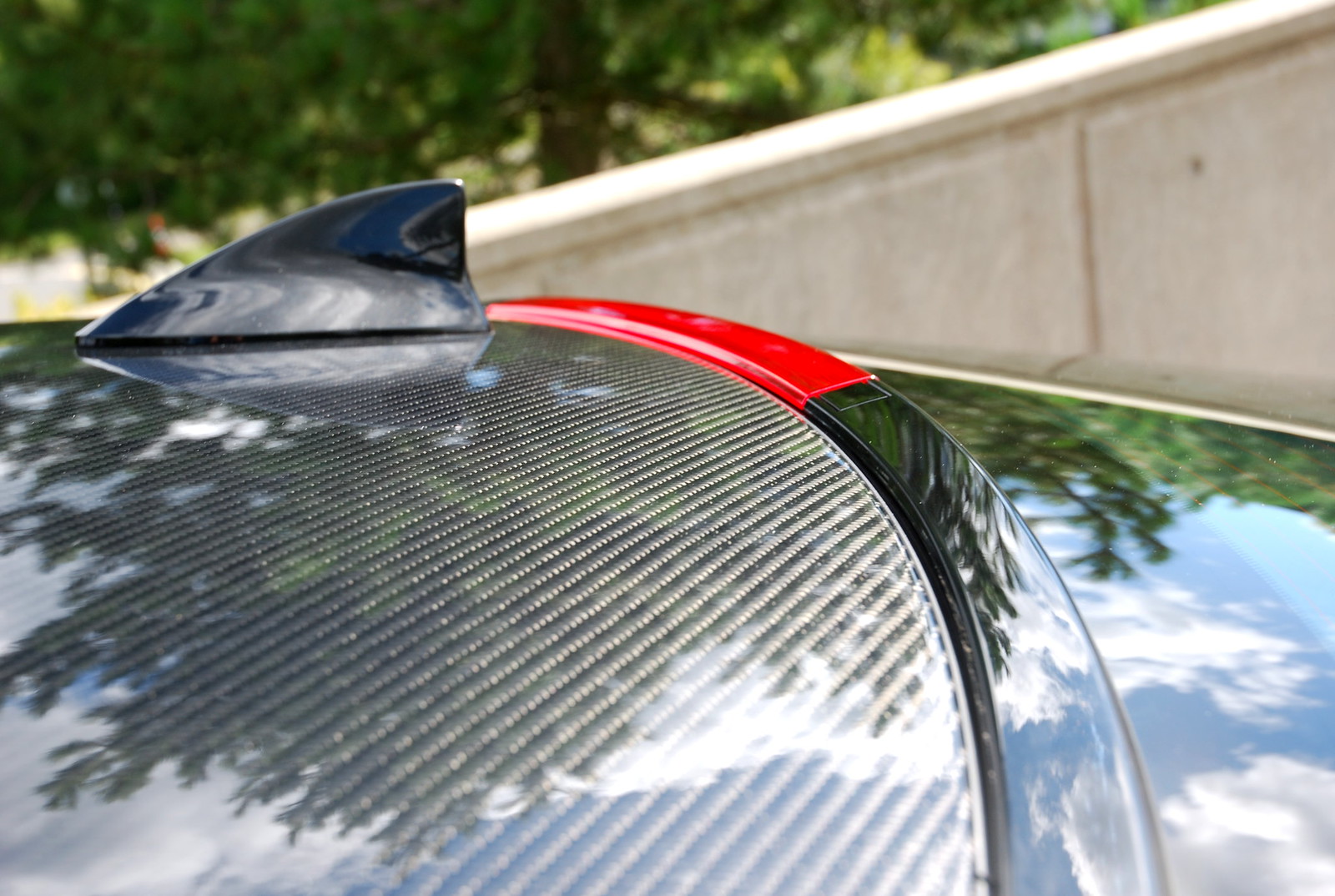
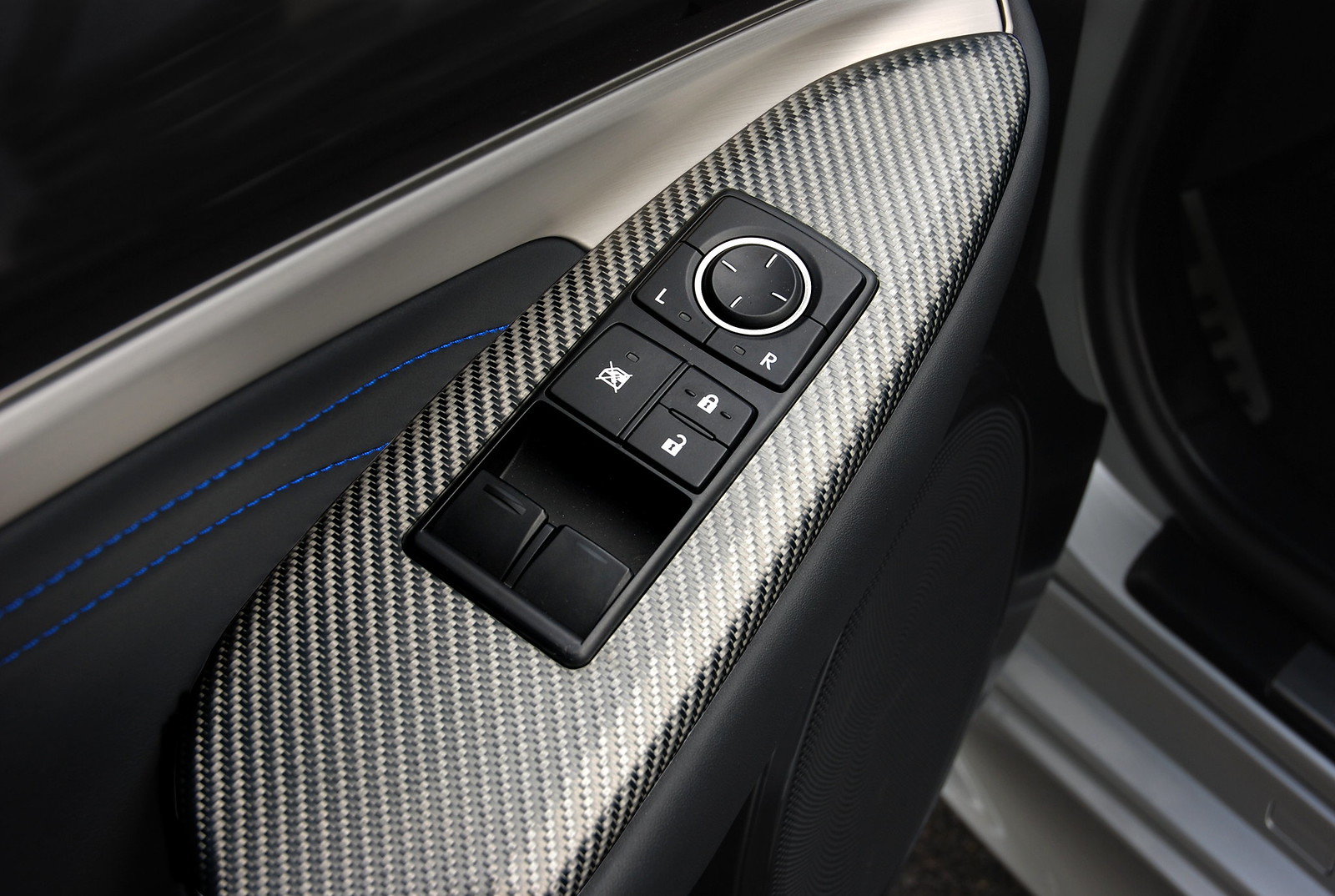


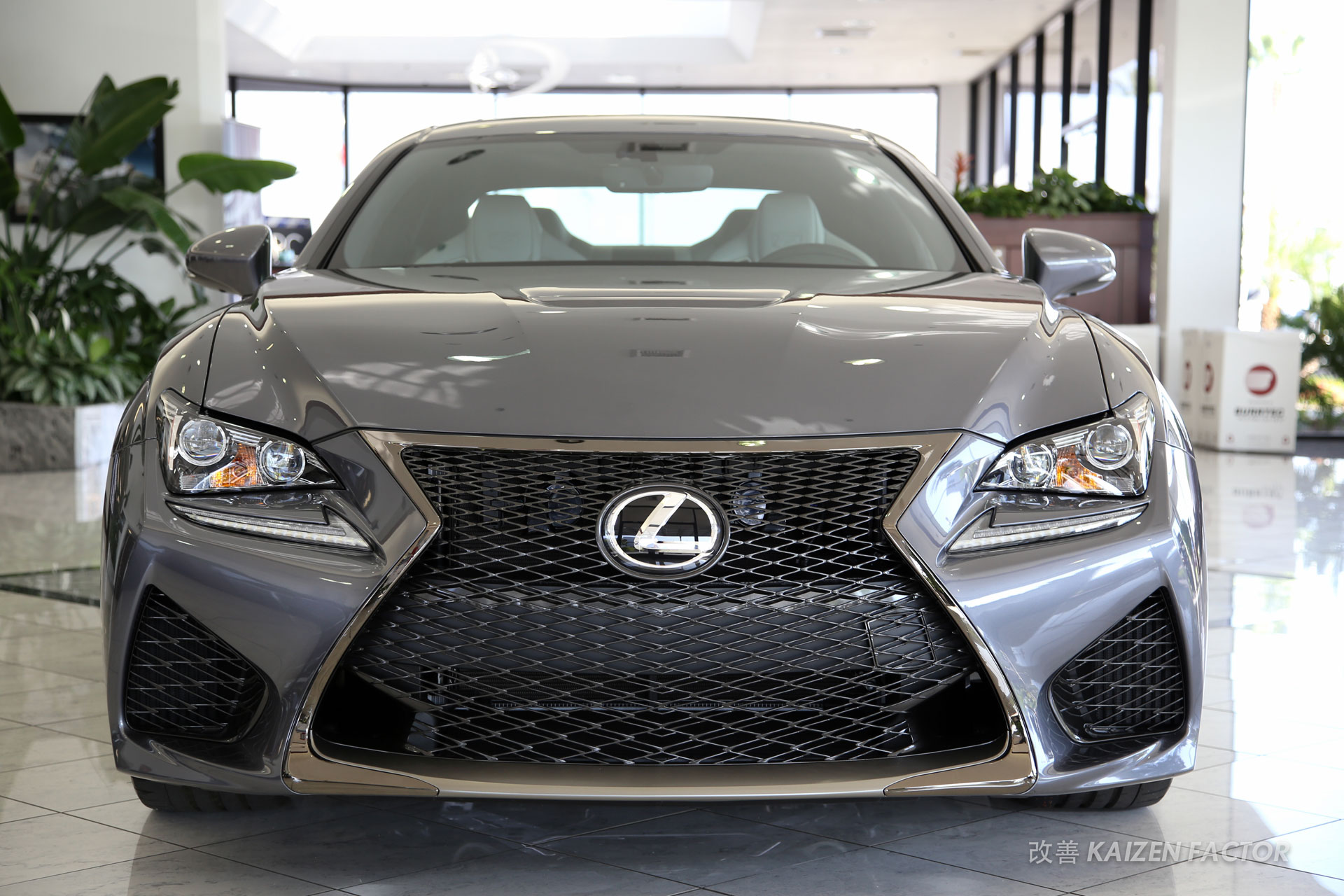
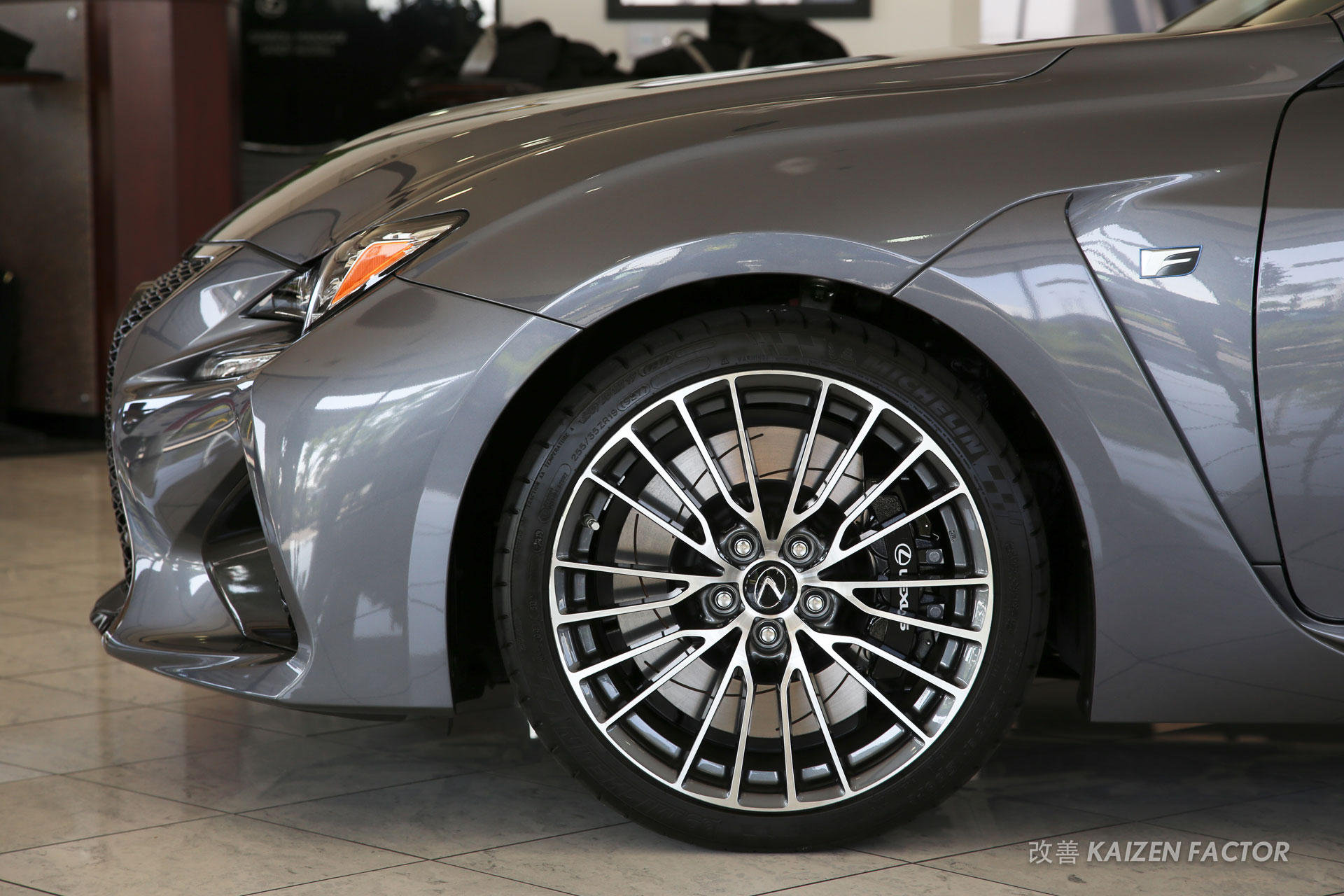

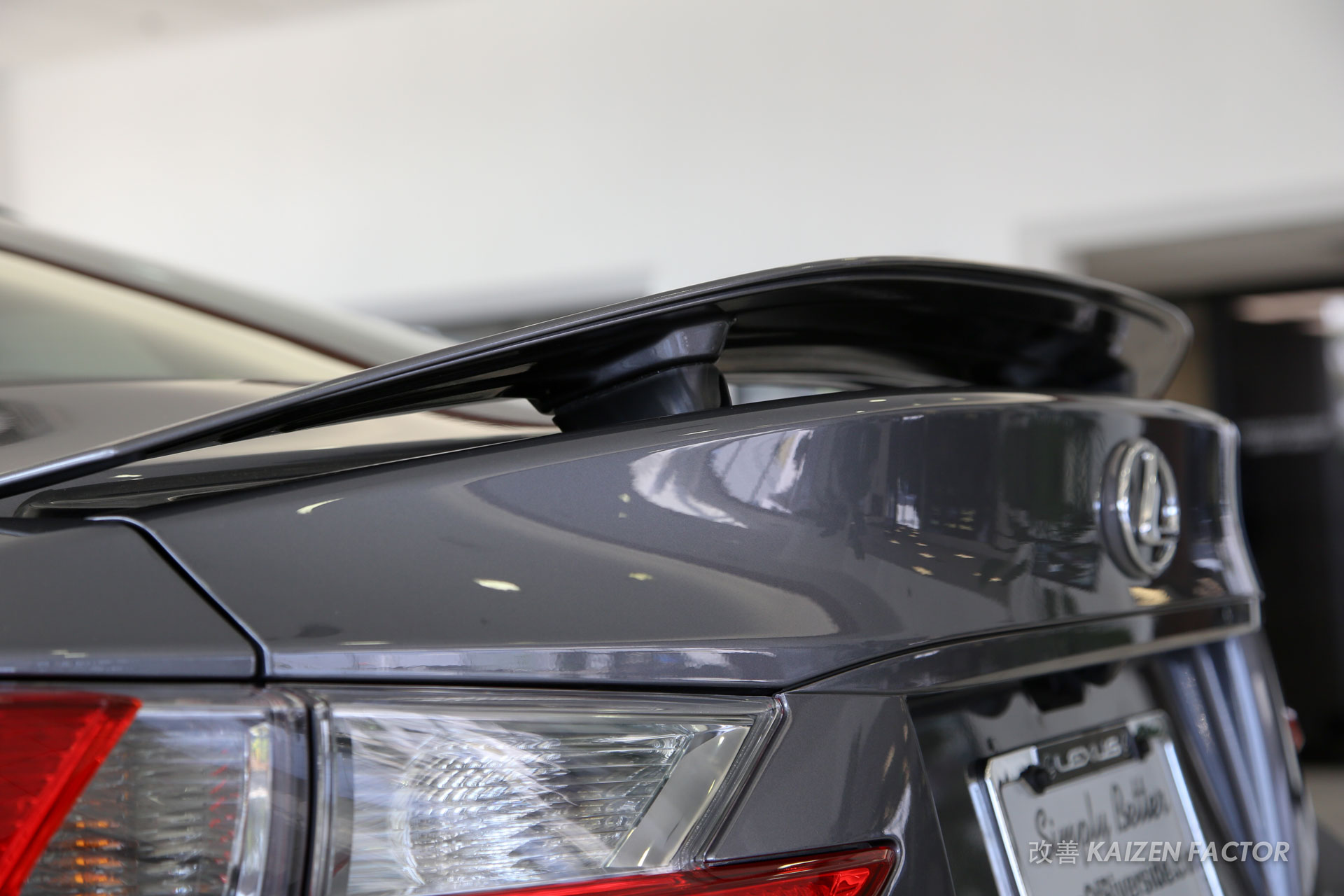
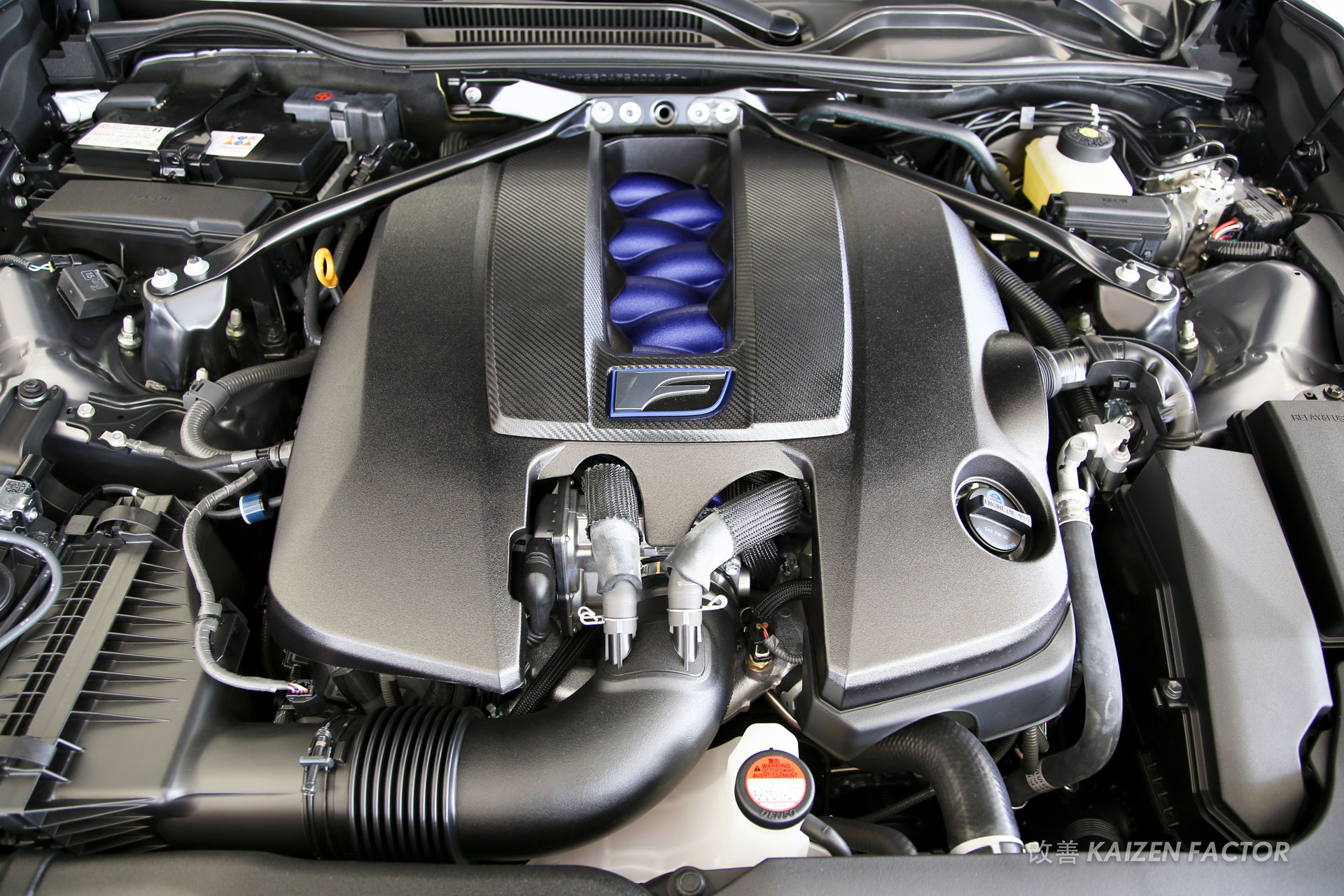
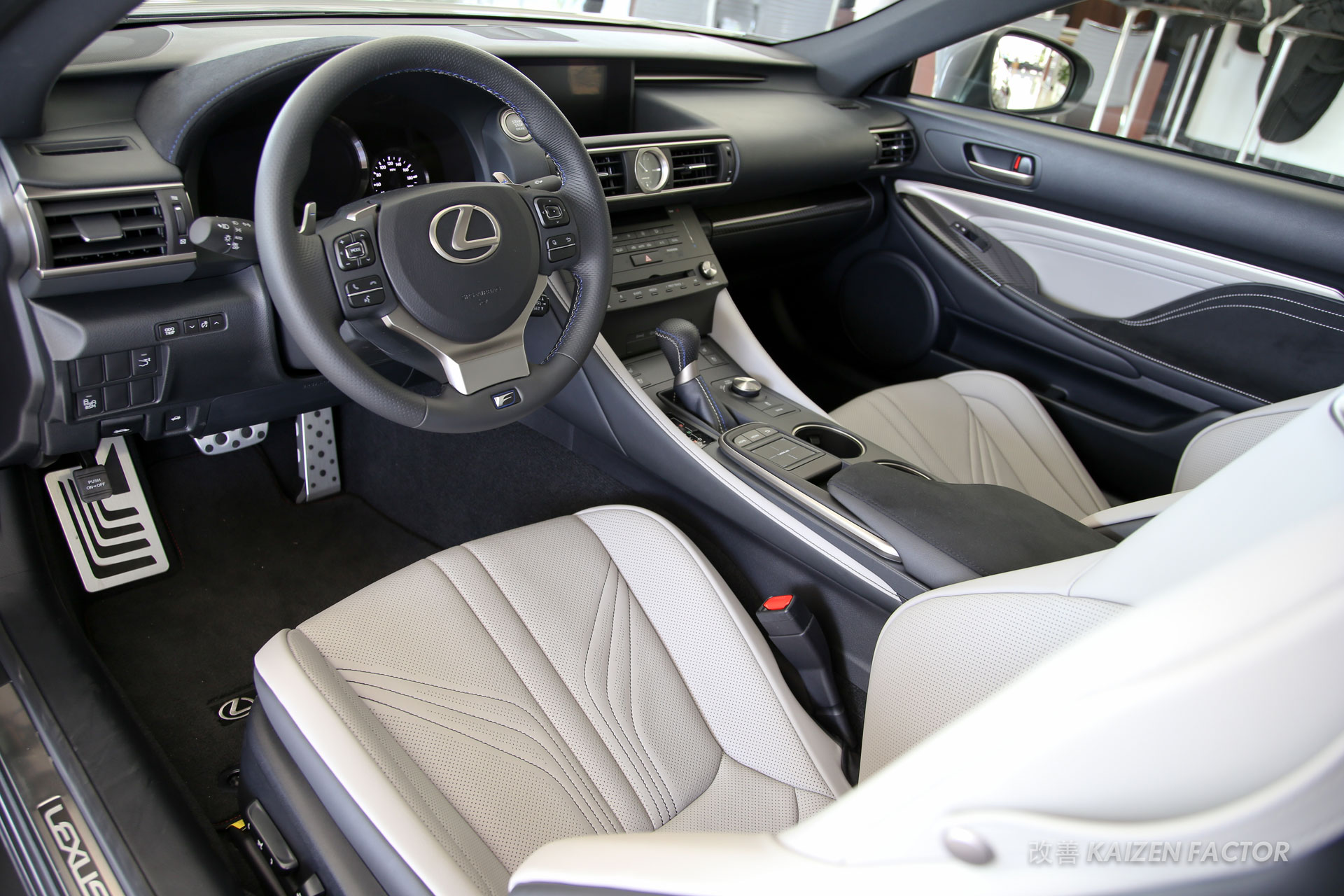
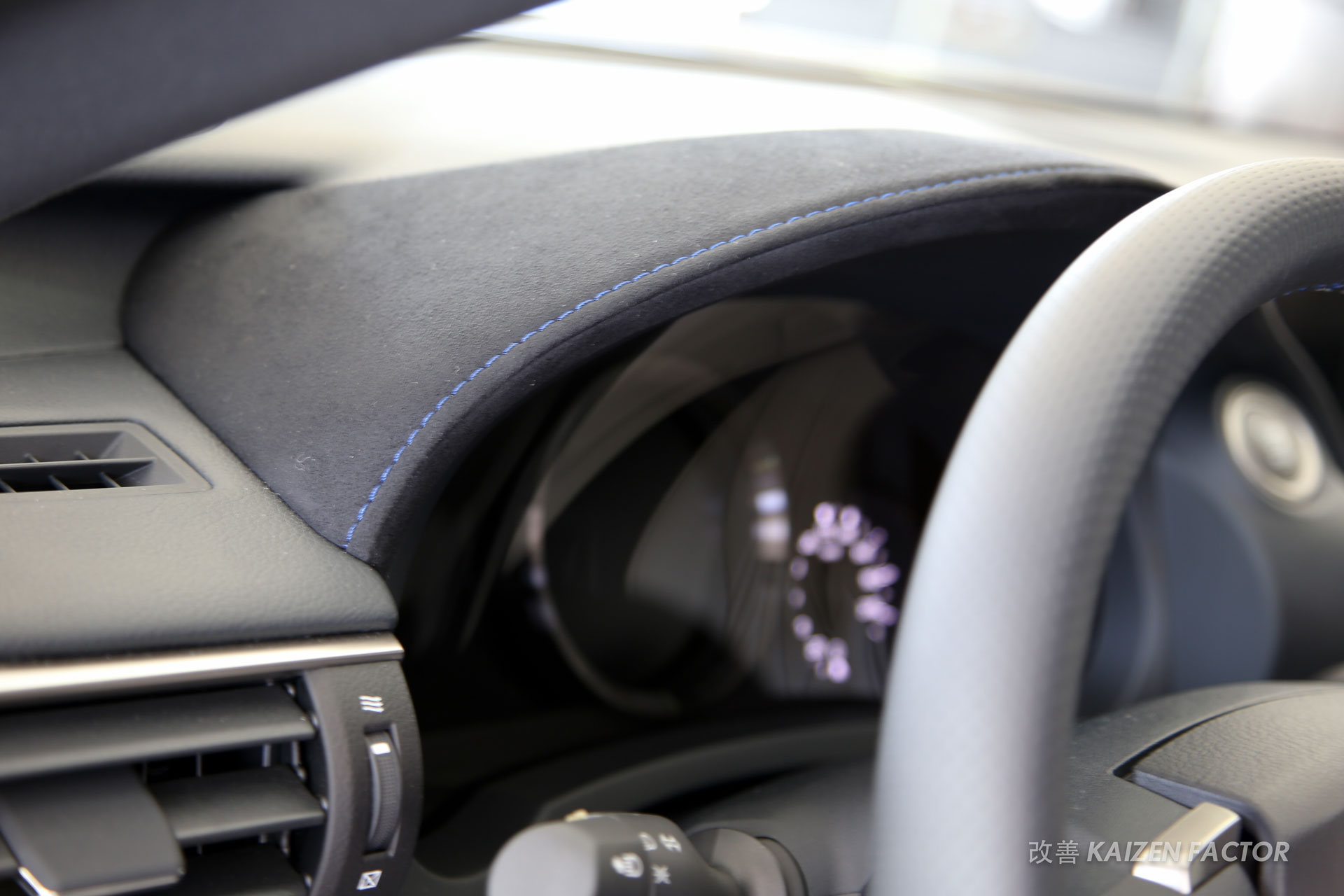





































Comentário